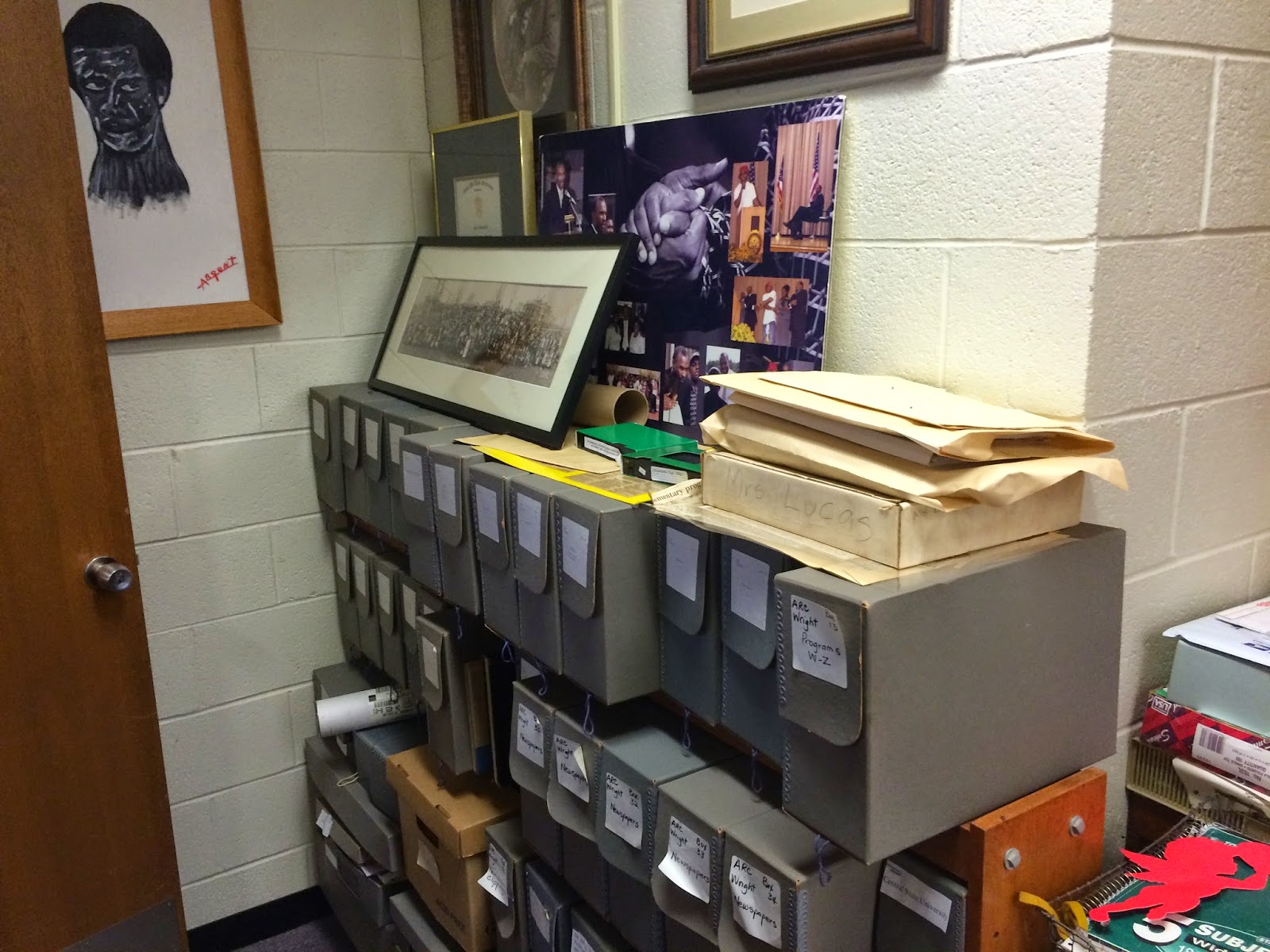On February 9, 2015 President of Payne Theological Seminary, Librarian and Director of Development, and I took the short trek (really less than a mile away) over to our mother school to visit with Mrs. J. Brown who has coordinated and managed the archives at Wilberforce University for close to 47 years. The purpose of the meeting was to introduce me to Mrs. Brown, share our plans for and progress on the Payne Theological Seminary and AME Church Digital Archive, and to identify areas of synergy between our work and collections.
The University was newly incorporated on July 10, 1863. In 1887 the State of Ohio began to fund the University by establishing a combined normal and industrial department. This department later became the University’s sister institution, Central State University. Wilberforce also spawned another institution, Payne Theological Seminary. It was founded in 1891 as an outgrowth of the Theological Department at Wilberforce University.
 |
| Isn't That The Truth? |
Being the first college to be owned and operated by African Americans, the archives contains an invaluable collection of materials related to the founding of the University, noted alumni, denominational and episcopal history, administration, African American History and student activity. Lining the walls when you first enter are busts, photographs, newspaper clippings and an assortment of artifacts ranging from the late 1800's to the present. Mrs. Brown showed us AME Conference Proceedings dating back to founding of the denomination and documents recounting the the start of Payne Theological Seminary. I will be working closely with Mrs. Brown to digitize some of Wilberforce's important papers and do a bit of processing.
A little bit of history with me and Wilberforce. I applied to Wilberforce for undergrad back in 2003. Tuskegee University topped my list (I wanted to be a maroon jacket tour guide so bad!) with Wilberforce and Bethune-Cookman being the other two HBCU's to which I applied. Tuskegee offered me such a meager scholarship that my mother was easily able to dead my dreams with threats of being stranded in the middle of nowhere with thousands of dollars of loans (which she wouldn't co-sign) to pay off. Gotta love moms! I never received a letter of acceptance from Wilberforce. In mid December 2003 I received a Christmas card from them. A few weeks later, another Christmas card. No letter of acceptance ever reached my mailbox. Bethune-Cookman came through with the full ride and the rest is history.
I have found throughout my life that God has brought me back to the places I once desired strongly in his own time and to a better situation. I applied to Duke for seminary and did not attend but was brought back to work as the librarian there under wonderful leadership that shot my career to the stars. This is how I know God is real and moving, check out this piece history about the geographical location of Wilberforce:
"As a base for the college, the Cincinnati Conference bought a hotel, cottages and 54 acres (220,000 m2) of a resort property, named Tawawa Springs after a Shawnee word for "clear or golden water". European Americans had founded the health resort because of the springs, which historically the Native Americans had long used. Because of its location, the resort attracted summer people from both Cincinnati and the South. Some people in this area of abolitionist sentiment were shocked when wealthy Southern planters arrived at the resort with their entourages of enslaved or free African-American mistresses and mixed-race "natural" (illegitimate) children." James T. Campbell, Songs of Zion, New York: Oxford University Press, 1995, pp. 259–260.
Shawnee, Shanee' close enough not to be a coincidence for me ;)









I know that this is not a new post, but I just saw it. Mrs. Brown is wonderful and so very helpful!!
ReplyDelete